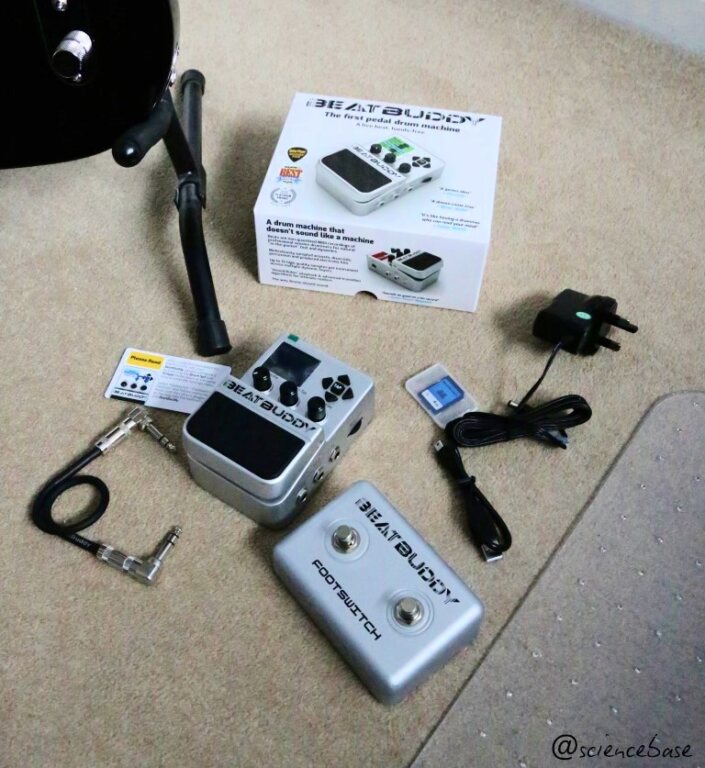BeatBuddy is the first drum machine stompbox for guitarists (and other musicians, I suppose). It was developed by Miami-based Singular Sound and definitely has a sunny disposition thanks to crowd-funding via IndiGoGo in 2014. Setup is a cinch, basically plug and play, although you do have to not lose the SD card that slots into the back as that’s where all the beats for your buddies are kept.
The main stompbox can be used as a standalone device fed to an amp, stereo or headphones. There’s no need to plug another instrument in. Of course, if you have a pedal board you stick this device at the end of the FX chain so that your delays, distortions and digital flanger don’t distort the drum sounds. There’s also a two switch footswitch, one switch adds an accent to the beat when you kick it, the second lets you move through the menus.

Three knobs on the main pedal control volume, let you choose the drumkit for a particular beat and set a tempo. You can also set tempo by tapping the tap button (which is surrounded by four navigation arrow buttons for controlling menus via the pedal-top backlit display. The right-hand side of the pedal also has a volume control for headphones and the inputs (for controller footswitch, R, L(mono) feeds from your instrument or pedal board. On the left-hand side R, L(mono) and headphone outputs and a Midi Sync socket. The rear of the pedal has the SD card slot and a mini-USB port. There are lots of extra sound files you can download for free and software to let you edit them into a suitable format for use with the box.
The drumkits include: standard studio kit sounds, rock, metal, jazz, brushes, Latin, dance, ethereal, and voice (beatboxing sounds). There are dozens of patterns in a wide variety of genres rock, punk, funk, blues, techno, reggae, world music, Brazilian, country, drum and bass, hip hop. And all can be played with any of the kits at any tempo from an incredibly lazy 40 to way-beyond dance 300 bpm (beats per minute). There is also a plethora of time signatures: conventional and common 4/4, 3/4, 6/8 to the more unusual, offbeat 5/4, 7/8, 9/4 etc listed under a genre referred to as Odd Time. You can opt for an intro fill to kick off a beat, then toeing the pedal once while a beat is playing will run a fill, another tap will play the next fill (there are usually 3 per pattern). A hold with the toe will play a transition pattern to take you to the next beat for a given pattern (think verse to chorus) and then another to take you back again. A double tap with the toe will play an outro fill to end the jam. Off-the-shelf it has more than 200 songs in 21 genres of 24-bit recordings of real drummers. And, the beats are non-quantized for authenticity.
One thing I haven’t figured out yet is how to simultaneously feed the output from the BeatBuddy and my guitar into my USB interface to record two separate tracks in my DAW (Digital Audio Workstation) as the interface only has a single line-in. But, that’s a limitation of my kit, not of the BeatBuddy.
The BeatBuddy is rugged but smooth, robust but chic. A great addition to any jamming guitarist’s pedal board or home studio set up and quality enough for stage or studio work. And, of course, it probably keeps far better time than any live drummer or beatboxer.